How to do the belly dance
ESSENCE OF BELLYDANCE™ - Free Online Belly Daning Classes
ESSENCE OF BELLYDANCE™ - Free Online Belly Daning Classes Join over 28.000 women in our Online Bellydance Classes Do you ever wonder how some women seem to move so effortless and
confident? Learn to move like a pro.
Join our online belly dancing classes - it’s free!
Start now
ESSENCE OF BELLYDANCE™ Online ClassesYou can dance with us for free! We have published the basic belly dance moves and regularly upload new videos for you. All workouts are playlists of several videos and contain a complete body warm up and a relaxing cool down Tell me more
Bellydance Class #1entry level
Start your training with this entry level class. You learn the fundamentals of belly dance: posture, seesaws, side sliding and mayas with your hips and chest.
Bellydance Class #2Beginner
Do the moves fromclass #1 already feel smooth & juicy? In class #2 you'll learn more belly dance basics: tilting internal circles and vertical circles with your hips and chest. The afro with pelvic floor integration is our specialty.
Beginner
In class #3 you'll learn more of the essential belly dance basics: sliding forward and classical Egyptian horizontal circles with the hips and chest.
Bellydance Class #4Beginner
In class #4 you'll learn more belly dance basics: camels with the hips and chest and your first sharp hips accents initiated by your gluteus muscles.
Bellydance Class #5Beginner
In class #5 you'll learn more belly dance basics: twists and horizontal eights with pelvic floor integration as well as some basic arm movements like the snake arms.
Bellydance Class #6Advanced
In class #6 you'll learn some advanced belly dance moves: hagala schimmy and variations as well as arm movements that lead up to the snake arms.
Advanced
In class #7 you'll learn some advanced belly dance moves: hip drops, accents, elegant eights with foot lifts, layered with chest camels and hip drops, as well as the secrets of a great hip shimmy.
Bellydance ChoreographyIntermediate - Advanced
Learn my beautiful belly dance choreography step by step! It's my interpretation of a classical Egyptian love song "Daret Al Ayam" (Days go by) by Um Kalsoum.
Bellydance all movesBeginner - Advanced
Here you have an overview of all the belly dance moves you have learned so far. Step by step instructions.
Bellydance all DrillsBeginner - Advanced
Here you have an overview of all the Bellydance drills with music. Dance for as long as you can!
Tips on Dance & HealthAn overview of Coco's tips & the home of her new interview series Free Woman. Have fun!
Have fun!
An overview on full length bellydance classes that we've recorded for you here in Berlin. The German video contains subtitles.
Sensuous Dance WorkoutEverything about Coco's Sensuous Dance Workout program - your personal wellness program at home: TV-shows, reviews, interviews.
COCO's Bellydance ShowsHere you can see a collection of Coco's belly dance shows. Enjoy!
Teacher TrainingListen to what our graduates have to say about our teacher training and watch the scholarship entries.
Fun Travel, interviews...An overview of all interviews, travel vlogs and other videos from and with Coco.
Join over 28.000 women in our Online Bellydance Classes Do you ever wonder how some women seem to move so effortless and
confident? Learn to move like a pro.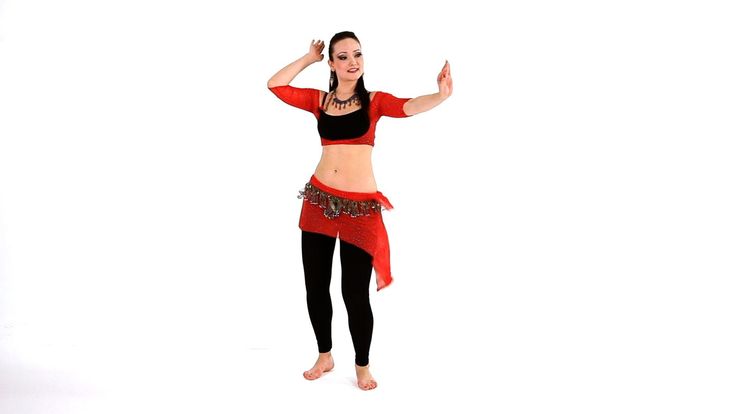
Join our online belly dancing classes - it’s free!
Start now
We use cookies to deliver our services. By using our website, you agree to the use of cookies as described in our Cookie Policy.
as seen on
- Learn how to belly dance
- Join our free online belly dancing classes
- How to belly dance for beginners
- Become a belly dance teacher and start your own classes
- Best online belly dance classes
- Discover belly dancing classes near you or learn how to belly dance online
- Best belly dancing workshops and classes online
How to Belly Dance | The 2023 Dancer’s Guide
Learning how to belly dance is a great way to connect to your body, strengthen your muscles and build your confidence. This distinct form of dance is one of the oldest known styles with a rich cultural history and many mental and physical benefits.
Although often performed solo, belly dance is rooted in connection, emphasizing the relationships between the dancer, the body, the community and the earth.
If you’re a beginner, you may be asking questions like is belly dancing difficult? Where can I learn how to belly dance? Or, can I lose weight through belly dancing? From in-person dance classes to online lessons, you can learn how to belly dance and explore the history and culture of this unique style with a group or in the comfort of your own home.
Whether you want to step outside of your comfort zone with a new type of dance or challenge yourself to shake your hips like Shakira, one of the world's most famous belly dancers, learning how to belly dance is a fun and energizing way to explore how your body moves while building confidence with each hip lift or belly roll.
Jump to Section
- How to Belly Dance for Beginners
- What is Belly Dancing?
- Belly Dancing History and Origin
- Egyptian Belly Dance
- What Does Belly Dance Do for Your Body?
How to Belly Dance for Beginners
Belly dancing for beginners starts with learning to isolate various parts of your body before advancing to layered isolations in different patterns to create a unique and mesmerizing sequence of movements.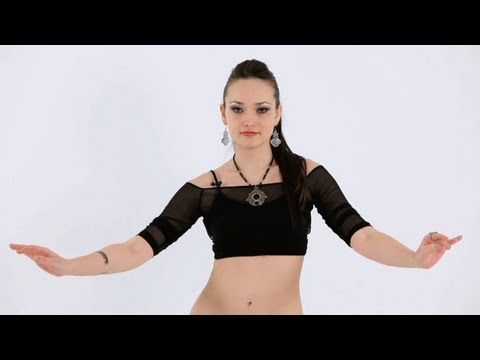
Foundational movements when learning how to belly dance include hip lifts, shimmies, belly rolls, figure eights and more. Newcomers learning how to belly dance might find it challenging at first, but thankfully, there are many instructors and resources available to help guide you as you master the basic moves.
Try Belly Dance Classes
Working with a seasoned instructor ensures the movements are performed safely and correctly and can prevent you from picking up bad habits and postures.
You can find classes available to help you learn how to belly dance at all levels whether you are looking for dance classes in NYC, dance classes in Las Vegas, dance classes in Orlando or dance classes near you.
If learning how to belly dance in person is a little too far out of your comfort zone or you can’t find a class in your area, there are also online dance classes available for you to try so that you can learn belly dance online and in the comfort of your home.
Once you are comfortable with the basics of how to belly dance, try a class with advanced techniques and begin to add your own unique flair to the routines.
via CanvaWhat is Belly Dancing?
Belly dancing is a distinctive form of dance that focuses on isolated movements of the hips and torso developed from rituals and customs from throughout the Middle East. This style of dance can be either performed solo or in a group and is well-suited to the feminine form.
The dance is often performed barefoot to highlight the connection between the dancer and the earth. Belly dancing costumes are made of flowing, brightly colored garments adorned with scarves, veils and jewelry. Some performers learn how to belly dance with accessories including finger symbols, coin belts or even swords.
Why Was Belly Dancing Created?
Contrary to popular belief, belly dance was not meant to be a dance of seduction or for the entertainment of men, but rather a form of feminine expression and celebration.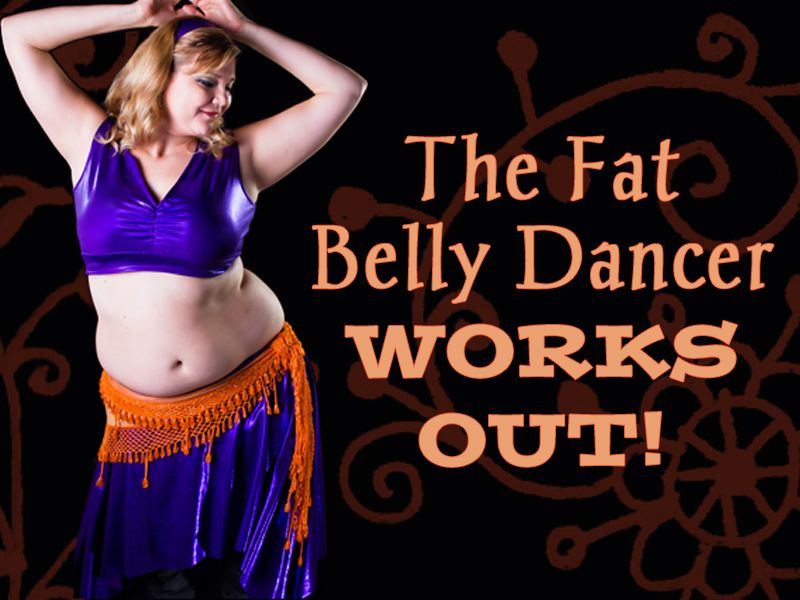
In some traditions, women gathered to perform belly dances together after the evening meal as an opportunity to socialize. This is where mothers of young bachelors could meet and observe potential wives for their sons.
In many cultures, belly dance, also called Oriental dance among other names, is a joyful dance performed by friends and family at occasions such as weddings and festivals. One of the foundations of learning how to belly dance with confidence, is that it is important to relax and enjoy the experience.
via CanvaBelly Dancing History and Origin
Understanding the origin of belly dancing and the rich history of this unique style is an important step in learning how to belly dance. As one of the oldest known styles of dance, with roots in ancient cultures from India to the Middle East, belly dancing has a long history layered with meaning and legend.
What Was the Original Purpose of Belly Dancing?
A fertility ritual performed by women thousands of years ago in honor of their deities is believed to be belly dancing’s origin and is depicted in ancient Egyptian tomb paintings, Greek sculptures and engravings discovered in Italian caves.
Other versions of belly dancing have been recognized in civilizations stretching from the South Seas and East Polynesia to Africa, Greece and throughout the Middle East.
One legend with versions across a number of cultures is of Ishtar and the Dance of the Seven Veils. Ishtar, a Babylonian goddess of love and sensuality who was both chaste and fertile, descends into the land of darkness covered in seven veiled costumes to retrieve her deceased husband.
To enter each seventh gate of the underworld, she dances, rolling her abdomen in circles, giving up a jewel and a veil. Despite the trials of her journey, Ishtar triumphs, returning with her seven veils to a bountiful homecoming.
When Did Belly Dancers Become so Popular?
In the eighteenth century, Europeans traveling in Egypt witnessed a distinctive style of dance, the Egyptian belly dance. A stark contrast to the fashions of England or France, the Europeans were mesmerized by the undulating movements.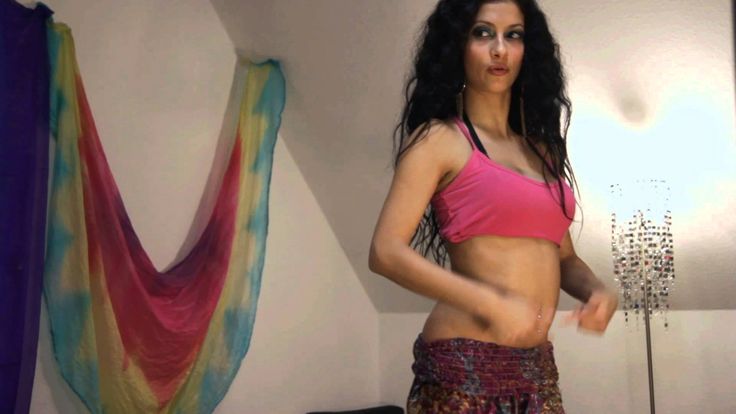 Belly dance continued to make its way to the West being introduced to America at the 1893 Chicago World’s Fair.
Belly dance continued to make its way to the West being introduced to America at the 1893 Chicago World’s Fair.
What promoters described as “belly dance” became an instant success in turn-of-the-century America. Despite the remnants of modesty from the Victorian era, belly dancing spread to Coney Island and other major cities.
The popularity of belly dancing throughout the West extended from colonialists enjoying the dance as entertainment in nightclubs to the film industry both in Hollywood and abroad, where the sequined bras and belted costumes now commonly associated with belly dancing were first introduced.
A pivotal moment in belly dancing history arrived as these Western influences returned to the Middle East, changing the nature and appearance of the dance. Belly dancers such as Samia Gamal and Tahia Carioca became international stars as Egyptian belly dance was frequently performed in clubs and cabarets as well as on the silver screen, inspiring many Westerners to appreciate and learn how to belly dance.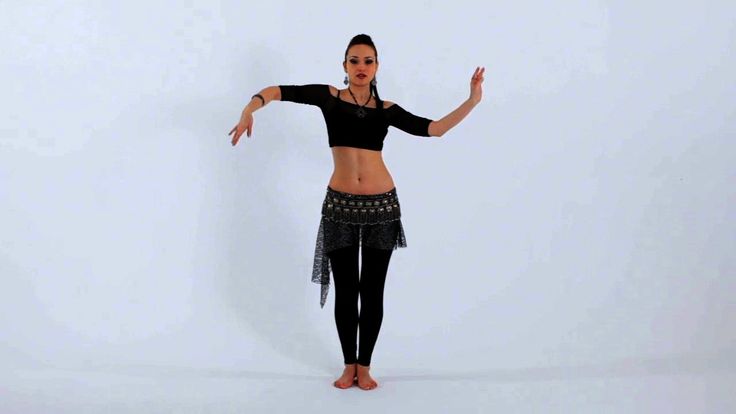
Why is Belly Dancing so Popular Today?
Today, travelers in many parts of the world seek to enjoy belly dancing as part of their experience of the local culture, whether taking in typical Moroccan nightlife or watching hula dancers in Hawaii.
Immigrants and descendents from countries throughout the Middle East and other regions where belly dance is practiced are free to express and share their native style of dance in restaurants, entertainment venues and dance studios throughout the West.
With its uniquely gentle movements and ability to tone often under-exercised muscles, learning how to belly dance as a form of exercise has also gained popularity and can be practiced in dance and fitness classes across the world.
Egyptian Belly Dance
Although there are many styles that make up modern Egyptian dance, the traditional Egyptian belly dance known as raqs sharqi in Arabic is most common for those learning how to belly dance in the West.
This form of Egyptian belly dance is traditionally performed solo as an artistic and emotional expression and grew largely out of films made in Cairo, Egypt’s Hollywood, that made Egyptian belly dancers famous around the world. The belly dancing costumes of the West were largely inspired by Egyptian belly dancer outfits of this style and time in Egyptian belly dance history.
Egyptian Belly Dance Costumes and Moves
Other popular forms of Egyptian dance include the social and celebratory beledi and sha-abi, often performed in groups at special occasions such as weddings and a variety of folk style dances such as melaya leff among others. Some dances feature props and garments such as canes, scarves or veils and each style has its own rhythms, costumes and character.
Some styles are more akin to the faster paced Turkish belly dance while others include lyrical movements similar to ballet. Elements of many forms of Egyptian dance are incorporated by Egyptian belly dance teachers in the United States and often serve as the foundation of learning how to belly dance in the West.
What Does Belly Dance Do for Your Body?
Is Belly Dance a Good Workout?
Years of research have shown that dancing of any style can have a number of physical and mental benefits. Learning how to belly dance strengthens the abdominals, thighs, calves, arms, back, glutes and hips as well as otherwise hard-to-tone muscle groups.
Learning how to belly dance can also help to improve posture and develop muscle control. Because of its relatively gentle impact on the body, belly dancing is accessible to individuals of all levels of fitness and can even be practiced during pregnancy to help prepare the muscles of the abdomen for childbirth.
Psychological Benefits of Belly Dancing
Dancing is believed to improve mental health, while belly dancing in particular may promote a positive body image for dancers as they embody the flowing, sensual movements.
As described in Science Daily, researchers have found that “belly dancers see their own bodies in a better light…and are less likely to be dissatisfied with how they look. ” Regularly practicing dance and joyful movement has been shown to lessen depression, increase self-esteem and improve overall psychological well-being.
” Regularly practicing dance and joyful movement has been shown to lessen depression, increase self-esteem and improve overall psychological well-being.
Researchers in Psychology Today explain that expressive practices and therapies such as music and dance, “could help lessen mental fluctuations before the onset of full depression” in addition to having creative, collaborative and social benefits.
Social Benefits of Belly Dancing
Participating in a class for belly dance for beginners will help encourage creative expression while building a sense of community. Many belly dancing classes promote socialization amongst members with a number of opportunities to bond available through gatherings, workshops and festivals.
For those hailing from countries where belly dance is a traditional part of celebrations and customs, practicing belly dance can strengthen connections to their heritage. Those who are foreign to the dance may find that learning how to belly dance helps them appreciate both the movements and their significance to belly dancing’s native cultures.
Even for those with little dance experience, learning how to belly dance can be a source of enjoyment and strengthened confidence. Exploring the sensual movements of belly dance helps connect you to your body and develop your ability to creatively express yourself through the dance.
With a rich and diverse history celebrating the female form and a variety of physical and mental benefits, learning how to belly dance might become your new favorite activity.
For even more creative ideas and inspiration, check out other experiences happening on Classpop!
Related Articles
A Beginner's Guide to Bachata DancingA Beginner's Guide to Cumbia Dancing
How to Line Dance Like a Pro
How to Slow Dance With Style
How to Salsa Dance Beginner’s Guide
How to Swing Dance: A Beginner’s Guide
how to learn belly dancing at home
Do you want to learn how to dance belly dance correctly? It is enough to learn a few basic movements and add a special mood to them. We have compiled detailed instructions on how to learn belly dancing so that you can dance no worse than a Colombian pop star.
We have compiled detailed instructions on how to learn belly dancing so that you can dance no worse than a Colombian pop star.
Tatyana Shamanina
Tags:
weight loss
Dancing
How To
Slim stomach
incendiary dance
Shutterstock
How to learn to dance a beautiful oriental belly dance at home? Of course, it's not easy. However, it is easier to dance it at home than any other dance style. Especially if you have never been into dancing before.
Basic movements
- Starting position
Stand with your feet together and your arms at your sides. Then slightly bend your knees and raise your chest - this is the starting position for starting any movement in the belly dance. For smooth movements in the dance, you need to tighten the muscles of the lower abdomen and engage the pelvis.
For smooth movements in the dance, you need to tighten the muscles of the lower abdomen and engage the pelvis.
- Hip lift or shimmy
Bend both knees. Then straighten your right leg to lift your right thigh up. Then lift the pelvis up to the chest, while the upper body should not be involved. The heels must not be lifted off the ground during this movement. When you "pull" up your right hip, lower it and repeat the movement with your left. Namely, straighten your left leg and lift your left hip up.
- Fast Pace Hip Lift
Repeat hip lift on both sides at a faster pace. Do not pause - first lift the right thigh up, and then smoothly - the left. At an accelerated pace, the hips will swing quickly from side to side - now you know how to perform the shimmy movement.
- Hip Drop
Start in the starting position with the right foot on the floor and the left foot slightly extended, about a few inches forward with the heel raised. Then bend both knees and keep your chest and arms up. Then straighten your left leg, lift your left thigh and immediately lower it to the level of your right thigh. At the same time, keep your right leg bent during the movement. Next, repeat the mini-bunch at a fast pace so that it looks smooth, without pauses and breaks.
Then bend both knees and keep your chest and arms up. Then straighten your left leg, lift your left thigh and immediately lower it to the level of your right thigh. At the same time, keep your right leg bent during the movement. Next, repeat the mini-bunch at a fast pace so that it looks smooth, without pauses and breaks.
- Belly
How to quickly learn belly dancing at home? Easy, the main thing is not to miss a single basic movement, including the “tummy”. Starting position - feet are on the floor, the upper body is raised, and relaxed arms are at the sides. Then slightly bend your knees and tighten the muscles of your upper abdomen, pulling them in. Then relax your stomach and tense only the muscles of the lower abdomen. Consistently alternate, pulling in the lower, then the upper press. Repeat the movement smoothly and without pauses.
- Try a breast lift
The last basic movement that will help you understand how to dance belly dance correctly. The starting position is a raised chest, arms are located on the sides, legs are together, and the feet are on the floor. Next, we pull the chest up to the end so that the shoulder blades seem to slide along the back. Then lower your chest back down. Repeat the link at a fast pace, while alternately contracting the abdominal muscles.
The starting position is a raised chest, arms are located on the sides, legs are together, and the feet are on the floor. Next, we pull the chest up to the end so that the shoulder blades seem to slide along the back. Then lower your chest back down. Repeat the link at a fast pace, while alternately contracting the abdominal muscles.
Why do home belly dancing?
Oriental dance will help not only lose weight, but also cope with various pains.
- Back and Joint Pain
Gentle movements increase the flow of synovial fluid (natural lubricant) in the joints, and also tone the back muscles, which improves posture and prevents back pain.
- Help in losing weight
How to learn belly dancing at home and lose weight? Easy - one hour session will help burn up to 300 calories.
- Preparing for childbirth
Belly dancing tones the abdominal and pelvic muscles involved in childbirth.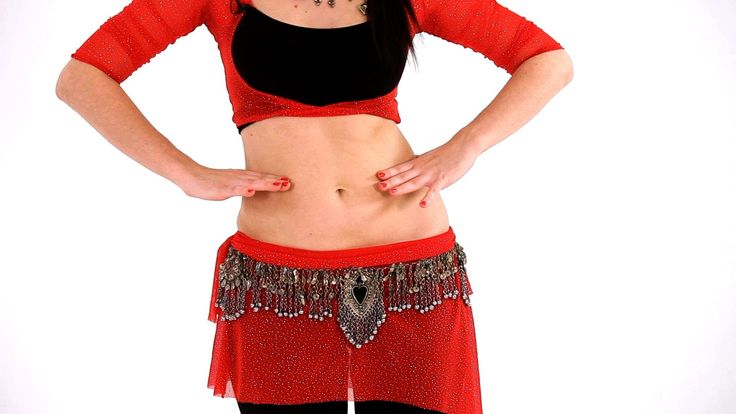
- Against stress
Oriental belly dance is not only beautiful, but also healing. The dance feels like a session of physical and psychological relaxation.
- Period Pain
Soothing dance bands help reduce pelvic congestion, which improves circulation and relieves PMS pain.
Learning to dance belly: 8 steps to beauty and harmony | Beauty secrets | Health
There is no more ancient dance than belly dance. Even the walls of the tombs, erected on the orders of the Egyptian pharaoh Akhenaten in the 14th century BC, are painted with scenes depicting in great detail nothing more than a belly dance.
The choreographer was a bee
The legend claims that this erotic oriental dance appeared quite by accident. It was all the bee's fault. Bewildered by the delicate floral aroma emanating from the oiled body of a young dancer, confusing her with a flower, a bee flew under her thin outfit during the performance.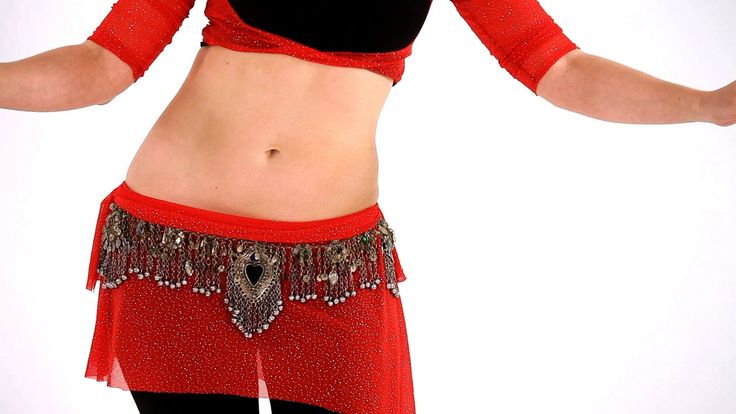 Frightened by the uninvited guest, the girl began to rotate her hips and stomach with all her might. It was as if her hips and stomach were competing in mobility, teasing and provoking each other. The grace with which she made the movements delighted those around her.
Frightened by the uninvited guest, the girl began to rotate her hips and stomach with all her might. It was as if her hips and stomach were competing in mobility, teasing and provoking each other. The grace with which she made the movements delighted those around her.
European travelers eventually became acquainted with the ancient dance. However, his eroticism is perceived by Europeans in different ways. “Indecency and indecency,” some exclaim indignantly. Others consider belly dancing a real art.
East - flexible body
Belly dance secrets are carefully passed down from generation to generation. For what? Not just for beauty. In Arab countries, the fertility of a woman is still perhaps her main advantage in the eyes of the majority. From early childhood, Arab girls begin to be taught special exercises, which are the basis of belly dancing. Daughters diligently adopt from their mothers the ability to control the body, move beautifully and gracefully. These simple movements make it possible from childhood to strengthen the muscles of the back, abdomen, lower back, and hips in girls - expectant mothers, which play a major role during pregnancy and during childbirth.
In addition, for Eastern women, belly dancing is an excellent means of maintaining harmony and seductive forms. Even having grown fat with age, Arab ladies move easily, remain amazingly flexible. This is confirmed by official science. According to the research of modern scientists, Eastern women are less likely to suffer from cervical and lumbar radiculitis, less prone to scoliosis and other diseases of the musculoskeletal system.
Following Hollywood stars
To maintain a perfect waist and elastic tummy, Hollywood stars are also fond of oriental dances. Imagine: in one dancing hour you can burn up to 400 kilocalories, strengthen the torso, improve coordination of movements, and make the spine more flexible. The dance will teach you how to move beautifully and follow your posture. And although at first it will be difficult for you, but in order to feel the gaze of men behind your back, it’s worth the effort.
Of course, it is better to learn belly dancing in the company of an experienced instructor, but some basic movements can be learned on your own.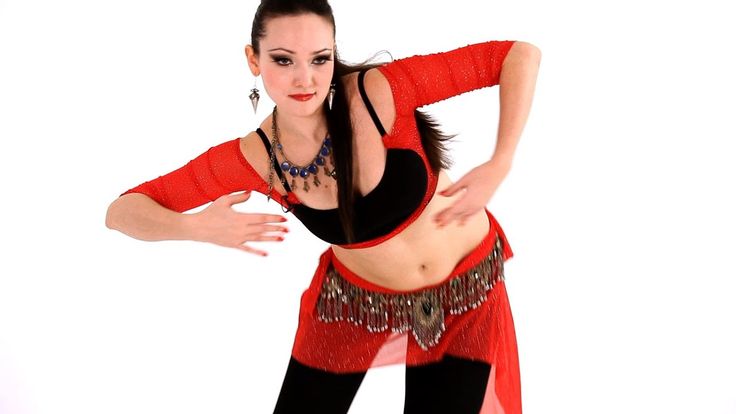 This simple but effective set of dance exercises in just a few months will make the abdominal muscles elastic and toned, and you - more sexy and erotic.
This simple but effective set of dance exercises in just a few months will make the abdominal muscles elastic and toned, and you - more sexy and erotic.
● Your clothing should be light and not restrictive. To begin with, tie a thin pareo (silk scarf) around the hips, which will effectively emphasize their flexible line. Raise your arms up and, clapping your hands to the beat, gently shake your hips. Do not start dancing immediately at a fast pace. Choose the rhythm of movement that suits you and try not to change it during the dance.
● Standing with your feet shoulder-width apart, raise your right thigh sharply, then your left. Try not to strain your abdominal muscles. Repeat the movement 8 times.
● Stand with your feet hip-width apart. Swing your hips gently from side to side, like a pendulum, 8-10 times. Make sure that only your hips move.
● Rotate your hips 8 times in each direction, as if you were spinning a hoop. Please note: the body must be motionless.
● Feet shoulder width apart. As you exhale, stick out your stomach as much as possible, 6-8 times. Tired - take a 10-second pause.
● Keep your feet shoulder-width apart. Place your right foot on your toes and lift your right thigh. Shift your body weight to your left leg. Vigorously rotate your right hip clockwise 6-8 times. Repeat the exercise by changing the position of the legs.
● Feet slightly apart. Move the pelvis forward (the stomach is tucked up, the muscles are tense), then back (the muscles are relaxed) 6-8 times.
● Exhale deeply, forcefully draw in the stomach - the diaphragm rises. Then slowly inhale through the nose, sticking out the stomach - the diaphragm goes down. Do not move your body - only the stomach works (repeat the movement 4-6 times).
Dance for half an hour a day (better in the morning on an empty stomach or 2 hours after eating), and normal blood circulation in the pelvis, good bowel function, beautiful gait and majestic posture, healthy joints, elastic muscles are provided to you.
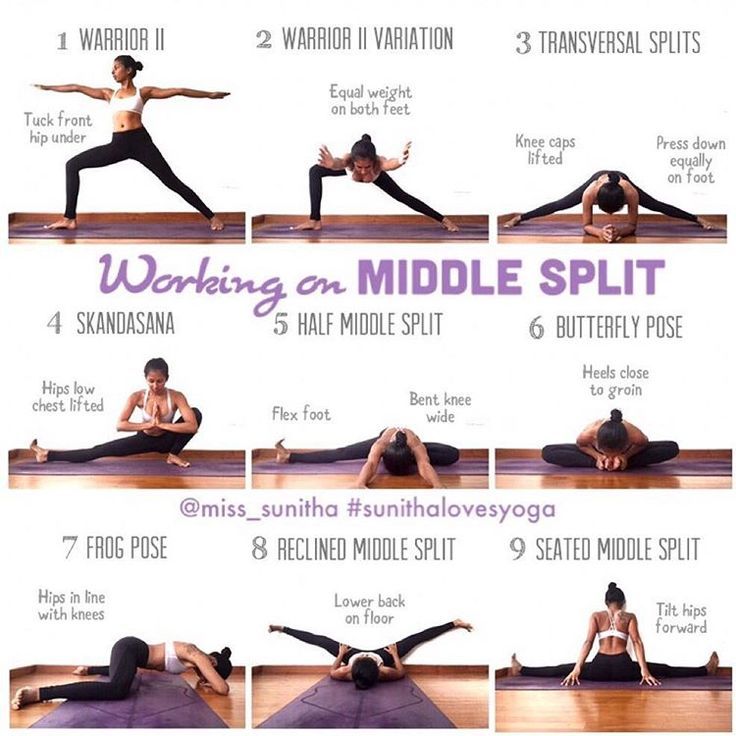
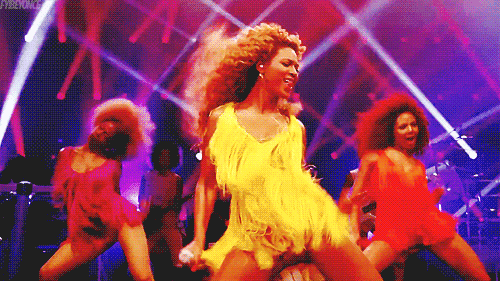
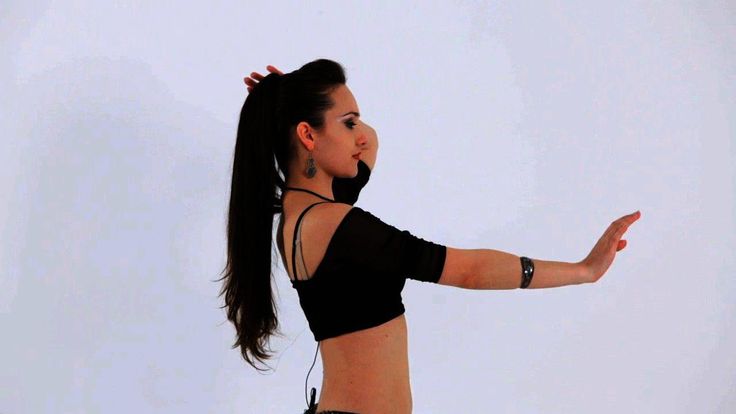

-Step-18.jpg/aid1640374-v4-728px-Shuffle-(Dance-Move)-Step-18.jpg)




